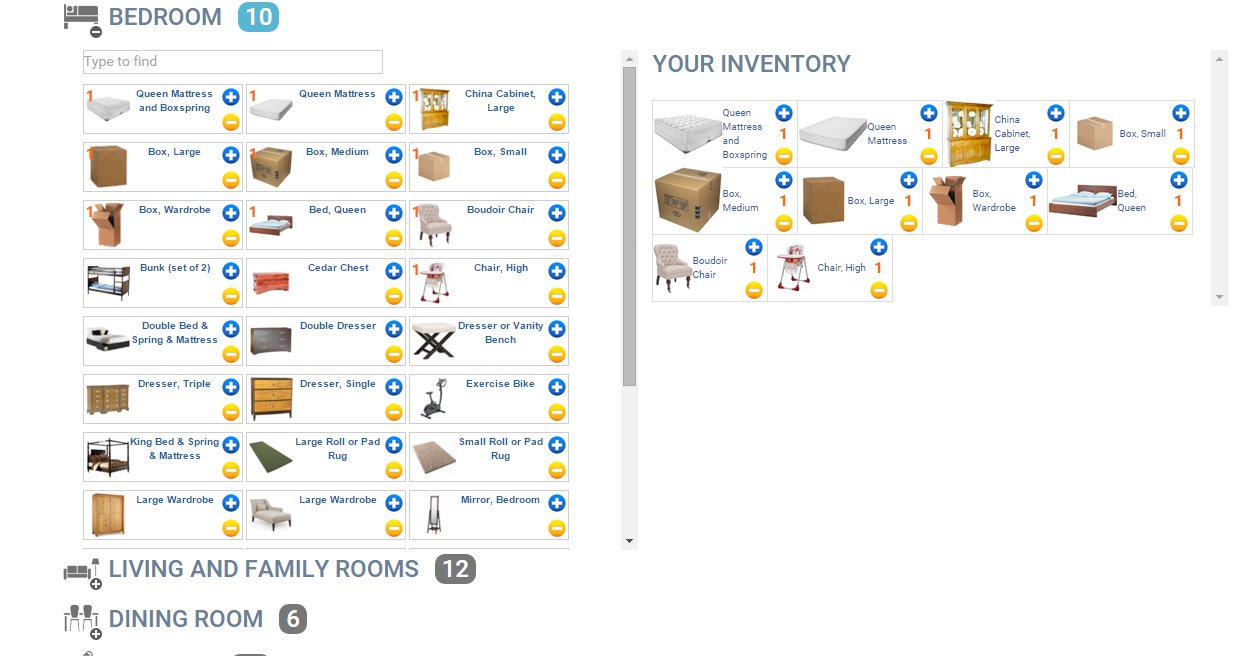Binding Price Moving
Binding Estimate Moving
- How Does Binding Price Work?
- Read the Agreement Thoroughly
- Accurate Inventory is Essential
- Non-Binding Agreement
1. How Does Binding Price Work?
Binding price not-to-exceed contracts help movers by guarantying a fixed estimate that will not become (surprisingly) more expensive, preventing the price from increasing during or after the move is completed. There is also an added bonus that if the weight is less than the binding estimate, the consumer will only have to pay the lesser amount. A moving company that offers the binding price agreement will provide the mover with a binding estimate along with a bill of lading (or receipt). Most experts agree that binding price contracts are usually a good way for movers to receive an estimate for their move and that if possible should make a point of requesting one.

2. Read the Agreement Thoroughly
The price estimate of the move is usually based on the weight of a previously inventoried list of items. The weight could possibly be and is often, more expensive or just different than what was originally estimated to be or proposed. If the mover wants to add more services after the contract has been signed, the moving company may request that the mover signs an addendum to the original binding agreement. Although these agreements can protect consumers and make them feel more financially at ease, they should make plenty of time to read through the language of the contract in detail before signing so as to avoid any inadvertent agreement to various specifications and stipulations that would require, for example, pre-payment or forfeiture of some kind. Also, make sure that the agreement applies to the mover in question and that all of the things that need to be moved are listed in the agreement.

3. Accurate Inventory is Essential
The company could refuse service if there are additional unlisted items that need to be moved and that is not mentioned in the agreement. If it turns out that additional items need to be added to the contract, a written attachment can be added to the binding agreement, which then makes it a non-binding agreement. To avoid unbinding the agreement and losing the protection, it is best to make a clear and accurate inventory of all of the items being moved so that the binding contract remains intact and does not become needlessly exorbitant.
Shuttle service (or auxiliary), long carry charges, and/or flight charges may count as additional charges which lay outside of the binding estimate moving contract and that a mover will have to pay for separately after the move, not before.
In most cases, the binding contract must be paid at delivery with certified/cashier’s check, money order, or cash.
Some companies will accept credit card payment if arranged prior to delivery. If for some reason the mover cannot make the payment at delivery, the moving company may opt to place all of the objects in a storage and the mover will be responsible for paying for the storage until the company receives payment.
4. Non-Binding Agreement
A non-binding agreement, on the other hand, requires a mover to pay the final costs, which are also based on weight, as well as the cost of any services, at the time of delivery. A non-binding agreement does not require a mover to pay any more than the original estimate listed on the agreement plus 10% at the time of delivery. Non-binding agreements allot 30 days to the mover to pay for any additional charges over that amount. Our moving price went up page does a decent job of explaining what you can do in many situations and offers, even more, information on what to expect when you are in this situation.


Comments
Reed Nicks
Feb. 23, 2022, 12:38 a.m.
From what I understand, moving companies are not allowed to charge you above the estimate they give you during their on site estimate? So if a moving company decides to charge more for my move after they have given me a binding estimate, what they are doing is illegal? So if I sign a contract of the binding price and I can't be charged more than the estimate, what do I do if I were charged more than my estimate from a moving company? Do I sue or go into arbitration? Is this covered by the arbitration program that my moving company had offered me? I just want to protect myself before agreeing to move with a moving company. I've heard horror stories where people have been charged double or triple what they thought they were being charged with and I don't want to fall into the same situation as they were in. I really can't afford to have to pay more than what is estimated during the on site estimate. If I had to pay more, then I wouldn't even be able to pay the mortgage for my new place. I sent an email to your company to see if I can talk to an associate who may be able to give me professional advice regarding these types of situations in moving. Please let me know if you are able to provide me with more knowledge about binding price estimates and how they benefit the customer. Thanks.
Add Comment